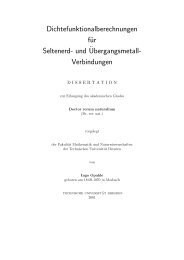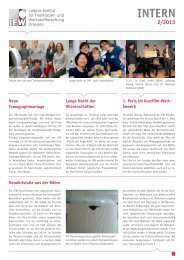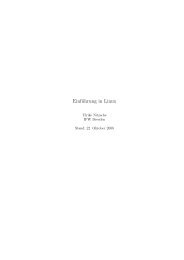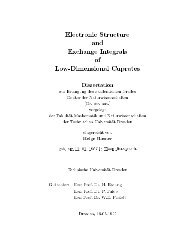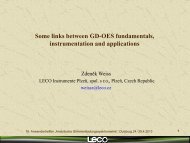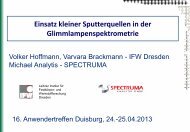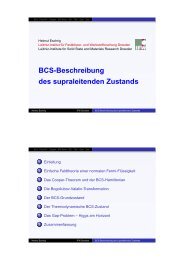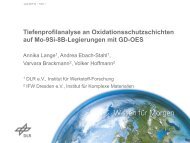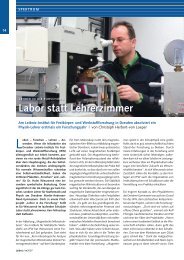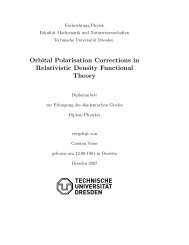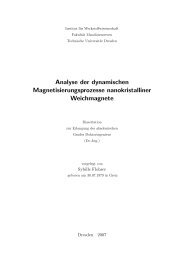ALBERTO BOLLERO REAL
ALBERTO BOLLERO REAL
ALBERTO BOLLERO REAL
Create successful ePaper yourself
Turn your PDF publications into a flip-book with our unique Google optimized e-Paper software.
4.3 PrFeB<br />
In addition to the mentioned advantages, at present, Pr is cheaper than Nd (about 2/3<br />
of the price) resulting in lower costs of the final magnet.<br />
Table 4.2 summarises the intrinsic magnetic properties and important microstructural<br />
parameters of Nd 2 Fe 14 B and Pr 2 Fe 14 B and, for comparison, α-Fe. Figure 4.6 shows the<br />
evolution of the domain wall width, δ w , with temperature.<br />
Compound T C (K) µ 0 H a (T) K 1 (MJm -3 ) J s (T) δ w (nm) d c (µm) reference<br />
Nd 2 Fe 14 B 585 6.7 5 1.60 4.2 0.3 [20,37]<br />
Pr 2 Fe 14 B 565 8.7 5 1.56 ∼4 ∼0.3 [16,83]<br />
α-Fe 1043 - - 2.16 30 - [84]<br />
Table 4.2: Intrinsic magnetic properties (Curie temperature T C , anisotropy field H a = (2K 1<br />
+ 4K 2 )/J s , anisotropy constant K 1 , saturation polarisation J s ), domain wall width δ w and<br />
critical single-domain particle size for magnetically uniaxial materials d c = 72µ 0 (AK 1 ) 1/2 /<br />
J s 2 of Nd 2 Fe 14 B and Pr 2 Fe 14 B. α-Fe has been added for comparison.<br />
Fig. 4.6: Calculated domain wall width δ w in Nd 2 Fe 14 B, Pr 2 Fe 14 B and Dy 2 Fe 14 B (from<br />
Givord and Rossignol [18]).<br />
33



